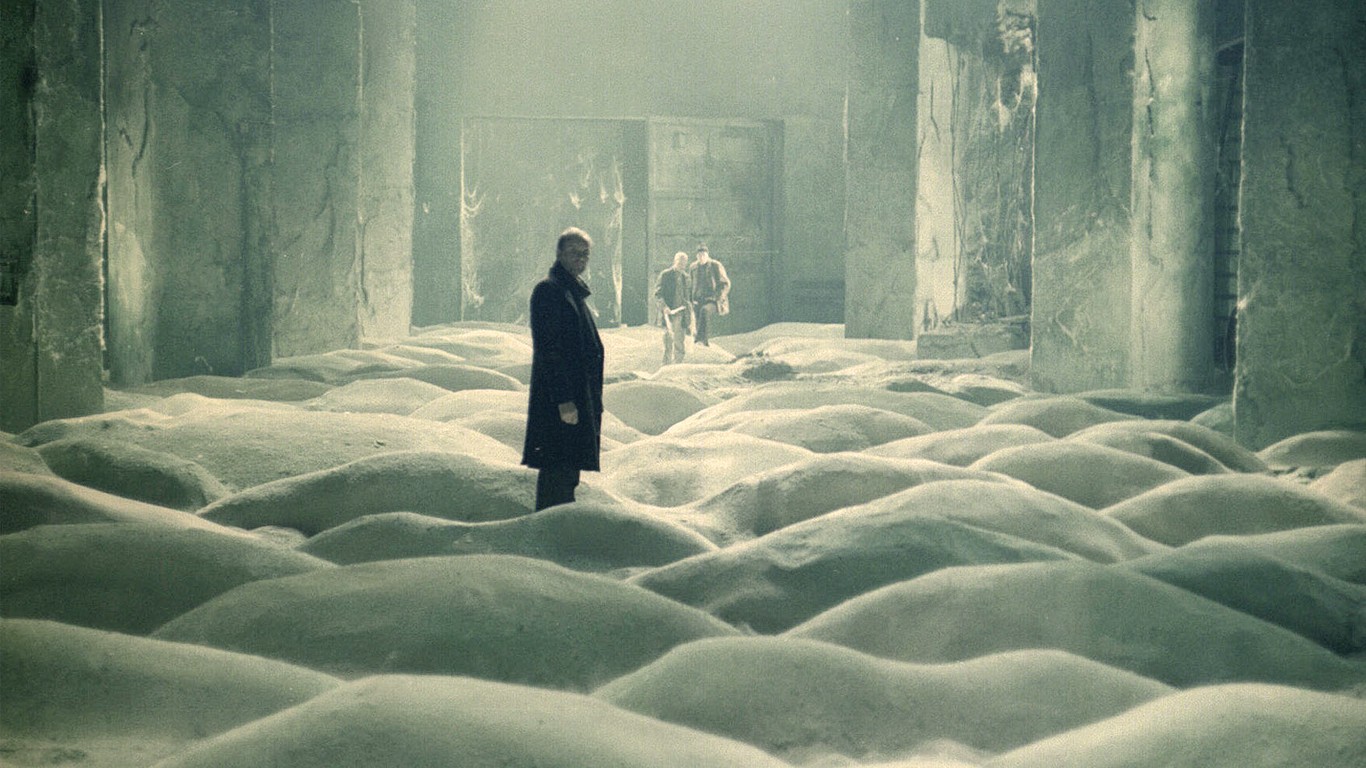
In this list, I present 10 films that are both philosophically profound and visually stunning.
It is difficult to choose just 10, and many of the directors whose films make it onto this list deserve more than just one mention. However, I limit myself to one film per author. I welcome suggestions or additions.
10. Metropolis (1927, Fritz Lang)

Metropolis is Fritz Lang’s most impressive film, featuring incredible special effects. Set in the year 2026, Metropolis is a film about the oppression of the working class by wealthy industrialists, particularly by one business man named Joh Frederson (Alfred Abel). Establishing a trope that would be used and reused time and again, Lang has Freder (Gustav Frolich), Joh Frederson’s son, fall in love with a woman from the working class.
This eye-opening experience changes Freder, causing him to fight for the rights of the underprivileged. Much more than a Marxist and Hegelian rise of the proletariat, this film is an exploration of technology and its relationship to mankind. Specifically, Lang examines how technology and racing to maximize production and efficiency can cause us to lose sight of what matters: life and our being. In this sense, the film is straight out of Heidegger’s .
What makes the film even more impressive is its beauty. Made in 1927, Metropolis makes use of incredible special effects, allowing viewers to be persuaded that Freder truly does live in a futuristic society capable of such massive industrial evolution. To achieve this realism, Lang employed hundreds of technicians and a few expert cameramen.
Most of the shots were achieved by using miniature and/or partially completed sets (making Metropolis one of the first films to use these techniques) and, of course, expert lighting. This allows Lang to produce attractive and stunning shots of cathedrals and buildings that, unbelievably, don’t actually exist, and to create a grandiose feeling for a film that was shot with the technological capabilities of the 1920s.
9. Winter Light (1963, Ingmar Bergman)
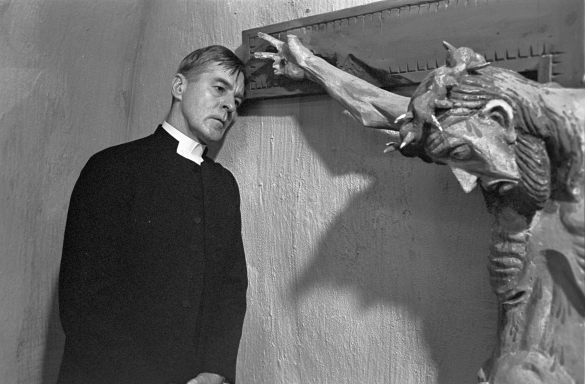
Winter Light is my favorite of the Bergman films, all of which are powerful, deep, and beautiful. Bergman, like Tarkovsky, knew how to construct a scene and use the camera to capture the splendor of the everyday. Winter Light is one of his many films about the silence of God. It follows Tomas Ericsson (Gunnar Bjornstrand), a pastor dealing with his mistress and deeply troubled parishioners.
Early in the film, we witness parishioner Jonas Persson (Max von Sydow) commit suicide and the havoc that it wreaks upon his family and friends. Bergman is primarily concerned here with God’s omnipotence and whether that can be reconciled with the great evil that plagues the world. Simply put, can an omnipotent God exist that is all good, all knowing, and yet also that allows individuals to commit suicide?
Winter Light explores this silence and contrasts it with stunning cinematography. In fact, the landscapes that Bergman captures on film are so beautiful that they seem to undermine his point and suggest the existence of a perfect God. The scenes shot in the church are also striking, using dramatic lighting to heighten the viewer’s mood as Tomas deals with his mistress.
The dark acts of this pseudo-couple are contrasted with shots of Tomas and a statue of the crucifixion, showing what real suffering looks like and how important faith is in the face of great danger, pain, and strife.
8. Synecdoche, New York (2008, Charlie Kaufman)
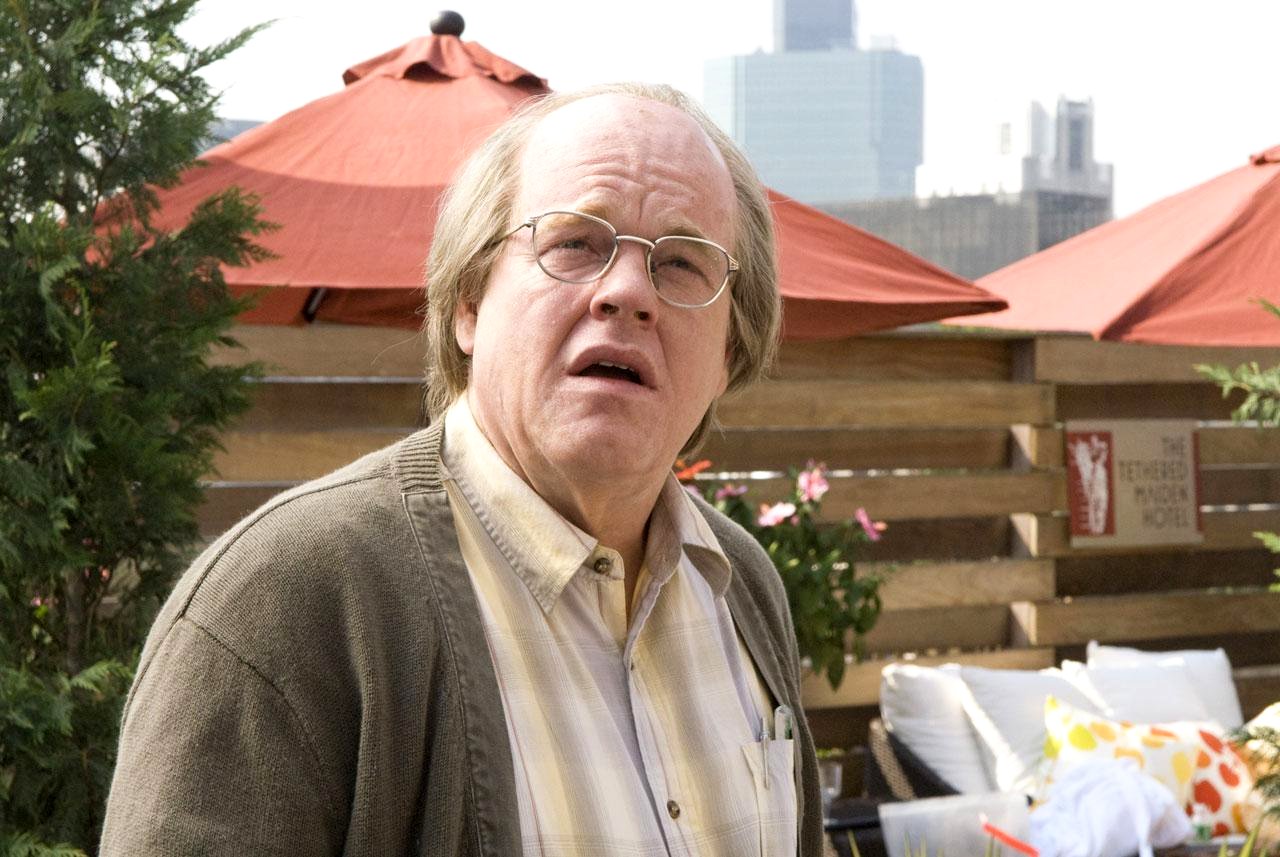
Synecdoche, New York follows Caden Cotard (Philip Seymour Hoffman), a dying playwright, as he works on his overambitious play. The film is very meta, given that Synechdoche, New York was Kaufman’s directorial debut and that, as a filmmaker, it probably seemed as if it was a never-ending and all-encompassing project.
However, Cotard’s play is actually written and practiced over a period of decades as his life spins out of control, and is never a finished product. The central focus of the film is Caden’s mortality and his willingness to embrace it fully in life and on the stage. At the end of the film he quotes Heidegger and slowly fades out of the play and existence.
Incredible for a first film, Kaufman achieved true genius with Synechdoche, and somehow made the absurd plot’s key points seem believable and almost natural. One perfect example of this genius is how the huge warehouse used for the play is depicted.
This is shown to viewers at different times during the film, and is made to look beautiful despite its unseemly decrepit state, all by artful camerawork and lighting. Perhaps it’s because the film is about a play, but the entire film is lit charmingly. Moreover, Kaufman seems to like basement scenes, and even manages to make those in Synechdoche feel dark and damp, like the souls of the characters.
7. The Fountain (2006, Darren Aronofsky)
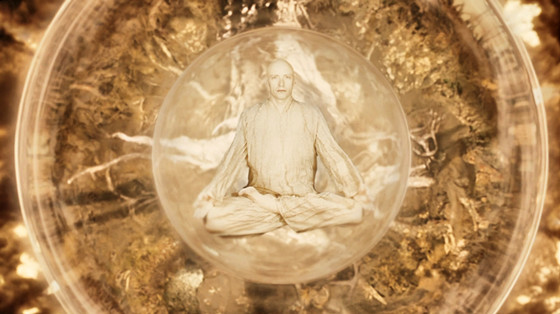
One of my favorite films to watch, The Fountain follows 2 characters/actors over 3 separate but similar reincarnative timelines. In modern times, Tom Creo (Hugh Jackman) is on the verge of losing his wife, Izzi (Rachel Weisz), to cancer and he works as a doctor racing to find a cure.
500 years earlier, Tomas Creo, a conquistador, is searching in Latin America for the fountain of youth under employ of Queen Isabella. And, nearing year 2500, Tommy Creo is attempting to bring the tree of life to Xibalba, the Mayan star, in hopes of bringing back his wife from long ago.
The realness of each of these plots is irrelevant compared to the looming death each character faces in his/her separate timeline. The Fountain is thus about death: its unstoppable and irrevocable nature. Nothing Jackman’s characters are able to do in any of the separate plotlines allow him to overcome death, despite his unwavering faith in each effort (this is significant, but a topic for a later date).
The film is as visually stunning as they come. Scenes from the modern plotline are shot well, feature dark lighting, and are just plain good-looking. Scenes from the medieval period are in the beautifully lush jungles of Latin America and make great use of dazzling Mayan structures.
More impressive, however, are the scenes of the future, in which Tommy is on a race to Xibalba. Instead of animating these scenes, filmmaker Darren Aronofsky decided to film yeast as it grew under a microscope, so as to provide realistic texture for the stars that Tommy passes through.
An excellent decision that has allowed the film to age well (and a decision about as creative as they come), it helps tie the film together under a similar color scheme. Moreover, all three timelines contain numerous visual allusions to one another in terms of camera placement and general mis en scene, making it a film that brings rewards with every rewatch.
6. Melancholia (2011, Lars von Trier)
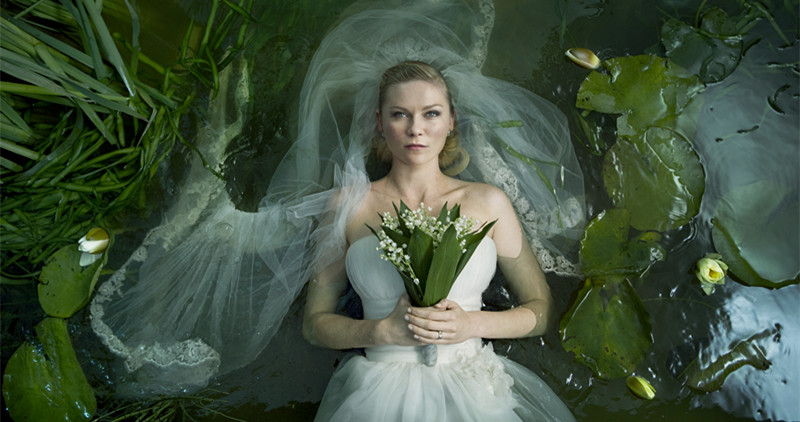
Melancholia is probably the cleanest and most accessible of the von Trier films, and thus the one I recommend the most (though I’m still not sure I can recommend von Trier, especially to the faint of heart). It follows a young woman, Justine (Kirsten Dunst), through two of the biggest three events of her life: her wedding and her death (thankfully, von Trier does not grace us with graphic details of her birth).
Of course, it depicts these two events in the most grotesque and nihilistic way possible, but Melancholia has a depth to it that leaves viewers shaken to their core. Its central focus is an examination of death and nihilism. We see everyone die (this much is revealed to us as the film begins) and then nothing follows. Darkness. Silence. The opposite of The Tree of Life.
The film is stunning though, both visually and audibly. It’s set alongside Wagner’s Tristan und Isolde, and begins with a stunning 15-minute-long slow motion intro depicting the end of the earth. This, of course, has to include animation, but von Trier pulls it off well, partially by including sweeping landscape shots reminiscent of Bergman or Tarkovsky.
The beauty of the film in some ways undermines its message, because it makes it seem as if we will all come to a beautiful death that isn’t so bad in the end. That said, it’s pretty clear von Trier wants the film to be disturbing and that he has just let his undeniable artistic talents get in the way.